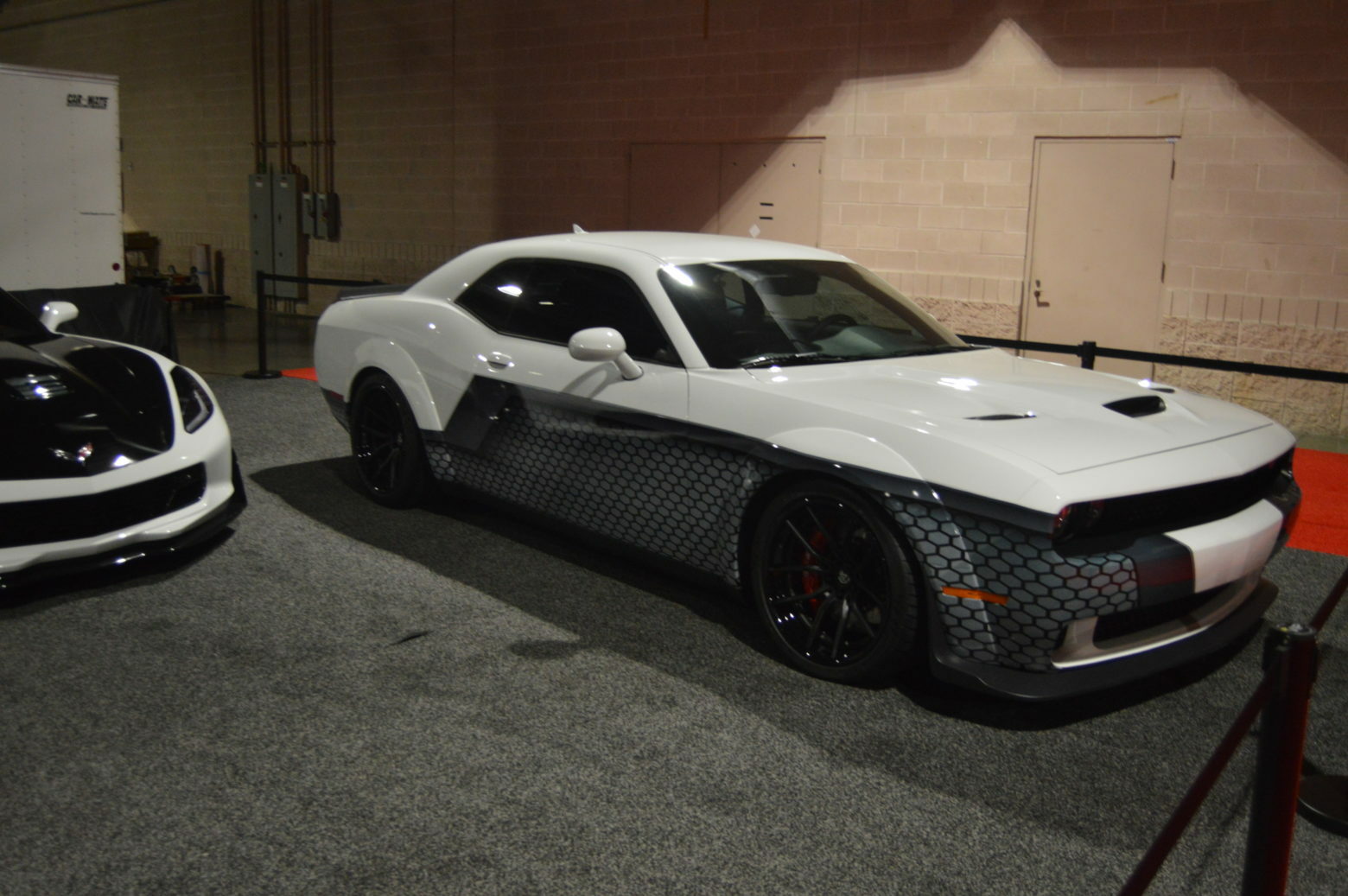
Finally! The conclusion of the Dodge Challenger electric conversion SWAP-C study. In part 1 I looked at the weight, part 2 the space and part 3 the power. Now in part 4, I will revisit and update each section, along with looking at the potential cost.

In part 3, it was determined that to obtain the close to 100-mile range, an additional 6 LG Chem battery modules would be needed (at the current weight). Therefore, I will quickly revisit and summarize the previous sections.
Updates
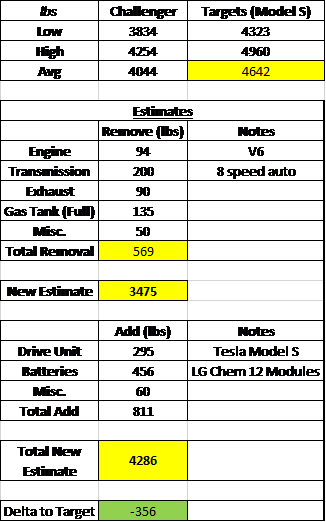
The target for weight was to remain under the Tesla Model S average weight of 4,6621lbs. At first glance, the removal of all internal combustion engine parts gave us a starting weight of 3,475lbs.
After revisiting this (due to comments on this article, thanks!) the engine weight should be a higher number. I like to be conservative, so I will plus the number up by 100lbs, even though some sources have it listed as weighing more. The miscellaneous section will also increase. I believe I did not account for a few other components that I may not add back in, such as the alternator, radiator, etc.
Again, being conservative, I will plus that up an additional 60lbs. New diet plan gets the de-iced Challenger down to a starting weight of 3,315lbs.
In addition to revisiting the miscellaneous removal, I also looked about what would be added back in during electrification. I added an additional 40lbs to account for battery boxes, radiators or other items. By doing this, my new target weight is 4,166lbs. This creates a larger delta to my target weight of 4,642lbs.
Previously, I was 356lbs under that target and was not hitting my desired range. With these weight adjustments I am now 476lbs below the target. Now to revisit my range.
Home on the Range
Previously, with a target weight of 4,268lbs the range of 31.2kWh battery pack was averaging 92.3 miles. With my new target weight of 4,166lbs the average range of the 31.2kWh battery pack is 94.1 miles. That is disappointing, but not unexpected. In the power section I had already resolved myself to needing to add a third pack of six modules to my larger battery pack. The table below show my updated range based on the lower weight.
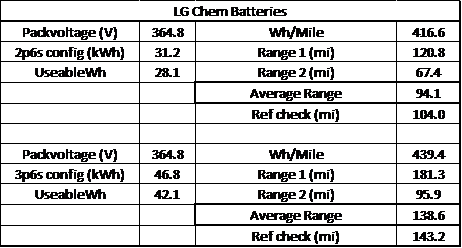
I am factoring cost into this summary, so I will price out the options for both battery configurations. The great part about an electric conversion, if the space is accounted for, the additional batteries can be added later. Having 90+ miles of charge for a first build would be stellar.
 Represent your love for EV conversions while supporting us! Grab some gear!
Represent your love for EV conversions while supporting us! Grab some gear!
Is there enough space?
Previously the battery pack layout looked like the photo here:
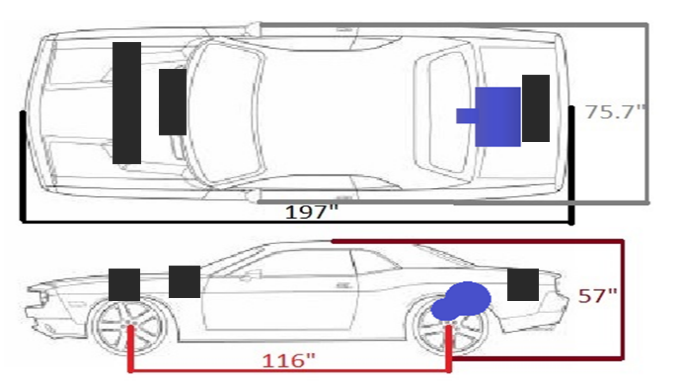
With the additional pack, there are two options. Either would be acceptable and would be looked at again for actual installation. Bottom line, the Challenger has enough room to accommodate the batteries.
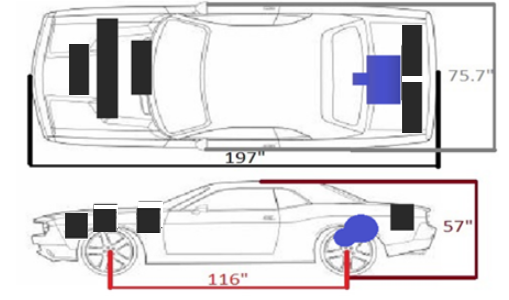
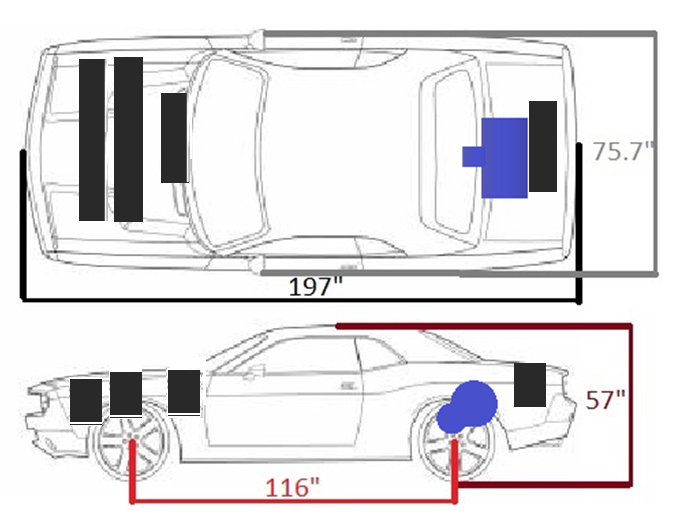
It’s all about the money
Looking at both battery options, I roughly priced up how much a Dodge Challenger conversion would cost. This does not include labor, strictly parts.

With the smaller battery pack, my estimated cost is just over $34,000. My original guess was $30k. By no means, did I intend for this to be a budget conversion. The focus was to build what is hopefully a badass electric sports car. My parts list in not exhaustive, but hits on the major components of an EV conversion build list.
Is it worth it?
On paper, this build looks to be exactly what I would want. An electric muscle car with modern styling, decent range and good performance. Remember, the performance comparison would be against the V6 Challenger, as that would be desired donor car.
If this car were to be the “mascot” of The Electric Speed Shop I would vote to build it. As a proof of ability, having a documented, physical electric muscle car would be an excellent way to drive sales. The Challenger stands out already, having an electric one at car shows would draw even more eyes. Attention is the desire of having a prototype to drive around.
Could it be sold for a profit is a totally different question. With a target material cost of $35k and probably 500 hours to build this would be an expensive conversion. Most mechanics charge between $75-$100 per hour. Using $90/hr as the base, the labor would cost another $45,000. Making the total cost $80,000. Yes, you can buy a real Tesla for that price. High end conversion shops however would charge somewhere in this range ($75k-$100k) for a custom build such as this one.
Enjoying this article? See what else the Electric Speed Shop has to offer.
Conclusion
I already voted yes, what do you think? What do you think is the value of an electric Dodge Challenger? Don’t forget to reach out on Facebook or Twitter to me know what car to look at next! As always, let me know what you think of this article, and the Dodge Challenger SWAP-C study!
